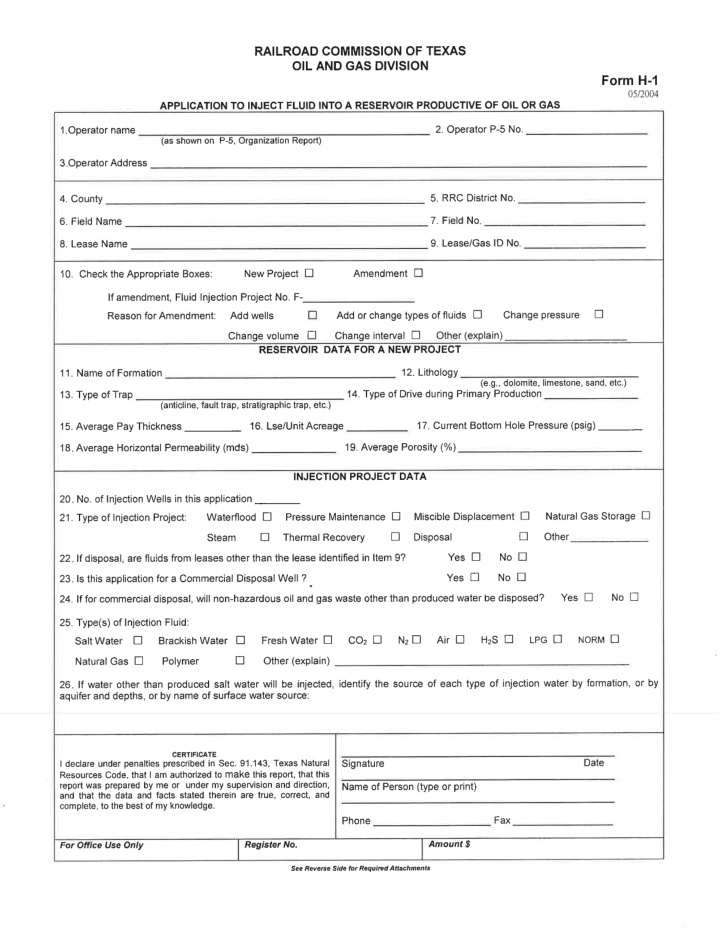



Glossary of Common Terms AOR – Area of Review: Area where surrounding wells are reviewed to determine if they are unsecured conduits that would transmit injected fluids from the injected interval to shallower strata or the surface. For most Class II wells, this represented by a circle with a 0.25 mile radiur drawn around the subject site. Wells with this circle are in the AOR and must be reviewed for compliance. API Number: American Petroleum Institute (well) number – Each well has a unique number for mapping and regulatory purposes. Each one has a 2 digit state code, folloede by a 3 digit county code, followed by a 5 digit unique number. The format is xx-xxx-xxxxx. In Texas, the first 2 digits are 42. BUQW: Base of Usable Quality Water – The depth determined by the GAU denoting groundwater with 3000 total dissolved solids or less. CCS – Carbon Capture and Storage: The procedure for capturing carbon dioxide, transporting it and storing it in a geologic reservoir. Synonymous terms: - GS: Geologic Storage - CCUS: Carbon Capture (Utilization) and Storage: Often used to denote scenario where industrial sources of CO2 are used for enhanced oil recovery. EOR – Enhanced Oil Recovery Forms: H-1 / H-1 A: Form used for application to inject into a productive formation H-5: Form used to report MIT testing H-10 Form used to document the pressure, volume, and depth of fluid and gas injections W-14: Form used for application to inject into a non-productive formation W-2 / G-1: Forms to document well completion activities. These are for (respectively) oil and gas wells. GAU: Groundwater Advisory Unit – Team at the RRC that reviews applications to determine the depth of groundwater. This is to be the depth of the first string of casing in a Class II well. GIS: Geographic Mapping System – Widely used mapping software to display both mapping information and associated data. MIT - Mechanical Integrity Testing – Periodically, a well regulated by the Railroad Commission must be pressure tested in order to make sure that it will hold pressure. Otherwise, injected or produced fluids and gases will escape the well and may pose an environmental or safety hazard. P&A – Plugging and Abandonment of a well RRC - Railroad Commission of Texas SDWA – Federal Safe Drinking Water Act: Regulates injection wells, and lab criteria for public drinking water.
TCAM: Tubing casing annulus monitoring – Permit condition requiring frequent monitoring of the annular space between the tubing and the production string. TCAM is common in older wells that are still usable, but due to age need to be more closely monitored. TOC: Top of Cement – This is the top of the cement pumped to secure a string of casing. It may be calculated, measured by a cement bond log, or measured by a temperature survey shortly after it ’ s pumped. UIC – Underground Injection Control: The part of the federal Safe Drinking Water Act (SDWA) that regulates injection wells USDW – Underground Source of Drinking Water : Federal definition for groundwater that must be protected. In most cases it has 10,000 mg/l total dissolved solids or less
Recommend
More recommend